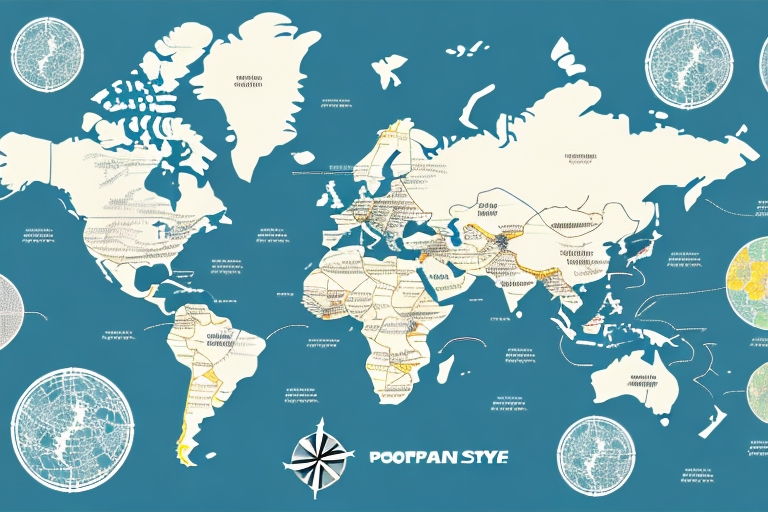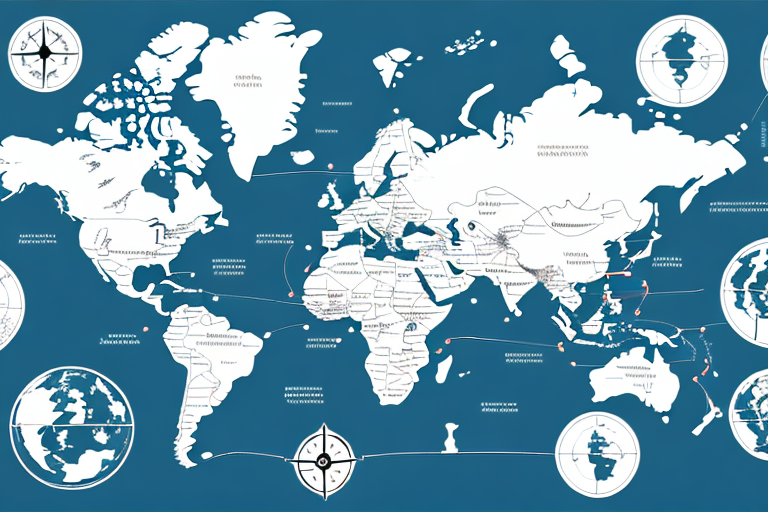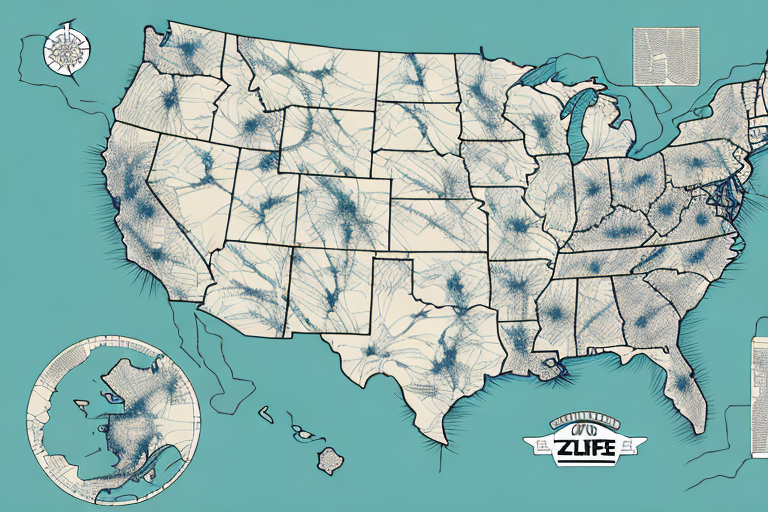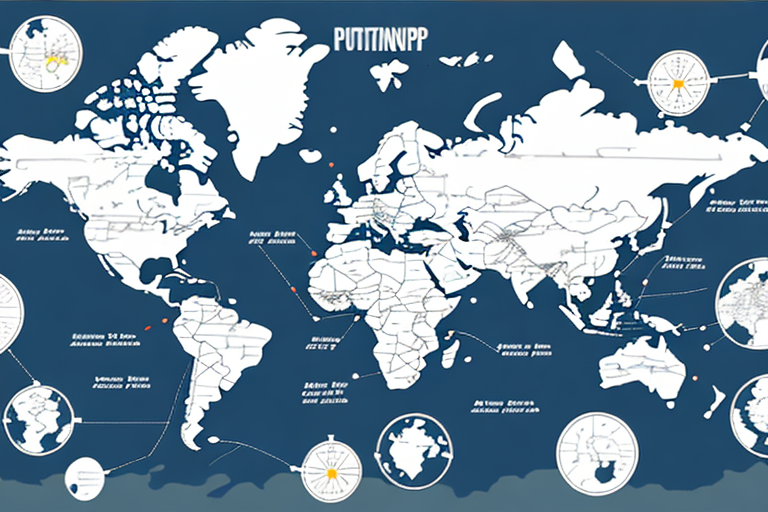Understanding the Ground Shipping Rates from UPS Zone 2 to Zone 8
When shipping packages across the United States, businesses have multiple carriers to choose from, with UPS being a prominent option for ground services. Understanding UPS ground shipping rates from Zone 2 to Zone 8 is crucial for optimizing logistics and managing costs effectively. This article delves into the components that influence these rates and provides strategies for businesses to enhance their shipping efficiency.
What are UPS Zone 2 and Zone 8?
UPS shipping zones categorize the United States into different regions based on the distance between the shipment origin and destination. Zone 2 represents shorter distances, typically encompassing deliveries within a close geographic area, while Zone 8 covers the farthest regions, including remote and rural areas. Understanding these zones is fundamental in estimating shipping costs and delivery times.
Factors Influencing Ground Shipping Rates from UPS Zone 2 to Zone 8
Several factors affect the UPS ground shipping rates between Zone 2 and Zone 8:
- Distance: The primary determinant, with rates increasing as the distance between origin and destination grows.
- Package Weight and Dimensions: Heavier and larger packages incur higher fees.
- Delivery Timeframe: Faster delivery options may cost more.
- Package Type: Special handling requirements for fragile or hazardous items can increase costs.
- Additional Fees: Fuel surcharges, taxes, and other fees can impact the total cost.
According to UPS's 2023 report, fuel costs account for approximately 20% of their total shipping expenses, significantly influencing fuel surcharge rates.
Impact of Distance on Ground Shipping Rates from UPS Zone 2 to Zone 8
As the distance between the shipper and receiver increases from Zone 2 to Zone 8, shipping fees typically rise. This is due to higher operational costs, including fuel, maintenance, and labor. For example, shipping a package from New York (Zone 2) to Los Angeles (Zone 8) will be more expensive than shipping within the same metro area.
Moreover, longer distances may involve crossing multiple tax jurisdictions, further increasing the cost. According to the US Department of Transportation, operational costs for long-haul shipping are approximately 15% higher than short-haul routes.
Effect of Package Weight on Ground Shipping Rates from UPS Zone 2 to Zone 8
The weight of the package directly influences the shipping rate. UPS categorizes shipments based on weight ranges, with each range having a specific rate. For example, a package weighing 10 pounds from Zone 2 to Zone 8 costs more than a 5-pound package for the same route.
In addition to weight, package dimensions are also critical. Oversized packages, regardless of weight, may incur additional fees. Ensuring packages are as compact and lightweight as possible can lead to significant cost savings.
According to recent industry data, optimizing package weight can reduce shipping costs by up to 10% annually for businesses with high shipping volumes (source).
Calculating Ground Shipping Rates from UPS Zone 2 to Zone 8
Businesses can utilize the UPS shipping calculator available on their website to estimate shipping costs based on package origin, destination, weight, and selected shipping options. Additionally, factors such as insurance, tracking, and signature confirmation may add to the total cost.
For precise budgeting, businesses should consider all potential fees and compare different shipping options. Leveraging UPS's online tools can aid in making informed decisions that align with business needs and budget constraints.
UPS Ground Shipping Services from Zone 2 to Zone 8
UPS provides a range of ground shipping services to cater to different business needs:
- Standard Ground: Cost-effective option for non-urgent shipments with predictable delivery times.
- Expedited Ground: Faster delivery option for packages that require quicker transit.
- UPS Ground with Guaranteed Date: Guarantees delivery by a specific date or offers a refund, suitable for time-sensitive shipments.
- Freight Shipping: For large and heavy packages that exceed standard ground service limitations.
Choosing the right service depends on the urgency, package size, and budget. For instance, standard ground is ideal for bulk shipments with longer delivery windows, while expedited services are better for urgent deliveries.
Transit Times for Ground Shipping from UPS Zone 2 to Zone 8
Transit times vary based on the distance and chosen shipping service. Typically, packages shipped from Zone 2 to Zone 8 may take between 4 to 7 business days with standard ground services. Expedited options can reduce this time to 2-4 business days.
External factors, such as weather conditions, peak shipping seasons, and logistical challenges, can impact transit times. According to UPS's tracking data, packages may experience delays of up to 2 days during high-demand periods.
For critical shipments, selecting a guaranteed delivery service ensures a specific arrival date, minimizing the risk of delays.
Strategies for Reducing Ground Shipping Costs from UPS Zone 2 to Zone 8
Businesses can implement several strategies to minimize shipping costs:
- Consolidate Shipments: Combining multiple packages into a single shipment can qualify for volume discounts.
- Optimize Packaging: Using the right size and lightweight materials to reduce dimensions and weight.
- Leverage Discounts: Utilize UPS discounts such as negotiated rates, loyalty programs, and business accounts.
- Flexible Shipping Times: Schedule shipments during non-peak times to avoid surcharges.
- Alternative Shipping Methods: Compare rates with other carriers like FedEx and USPS to ensure competitive pricing.
According to shipscience.com, businesses that implement these strategies can reduce their shipping costs by 15-20% annually.
Saving Money on UPS Ground Shipping Expenses
To further reduce expenses, businesses should:
- Take advantage of available discounts such as negotiated rates for high-volume shippers.
- Optimize the shipping process by minimizing packaging material costs and selecting cost-effective packaging options.
- Implement automated shipping solutions to streamline operations and reduce labor costs.
Implementing these practices can lead to significant savings, enhancing overall profitability.
Impact of Fuel Surcharges and Other Fees on UPS Ground Shipping Rates
UPS applies additional fees such as fuel surcharges and taxes, which can substantially affect the total shipping cost. Fuel surcharges are typically calculated as a percentage of the base shipping rate and fluctuate with market fuel prices.
For instance, as of 2023, fuel surcharges constitute approximately 18% of the shipping cost for long-distance ground shipments. Additionally, handling fees, residential delivery fees, and remote area surcharges may also apply.
Understanding these fees is essential for accurate budgeting and cost management. Businesses should regularly review UPS's rate changes and plan accordingly to mitigate unexpected increases in shipping costs.
Pros and Cons of Using UPS for Ground Shipping Between Zones
Pros:
- Extensive nationwide coverage, including remote areas.
- Reliable and predictable delivery times.
- Comprehensive tracking and customer support.
- Various shipping options to meet different needs.
Cons:
- Potentially higher costs compared to some competitors.
- Additional fees can complicate cost estimates.
- Longer transit times for cost-effective services.
Choosing UPS requires balancing these factors based on specific business needs and shipping priorities.
Comparing UPS Ground Shipping Rates with Other Carriers
When determining the best carrier for ground shipments between zones, it's advisable to compare rates and services offered by different providers. Key competitors include FedEx, USPS, and DHL.
For example, USPS Ground Advantage may offer lower rates for small, lightweight packages, while FedEx Freight could be more competitive for heavy shipments. Additionally, DHL focuses more on international shipping, which may not be suitable for domestic ground shipments.
According to shipscience.com, businesses that regularly compare rates and services can save up to 10% on shipping costs by selecting the most cost-effective carrier for each specific shipment.
UPS Customer Service and Support for Ground Shipping Between Zones
UPS is recognized for its robust customer service and support infrastructure. Businesses can access 24/7 customer support via phone, email, or live chat to address shipping inquiries and resolve issues promptly.
Furthermore, UPS provides a suite of online resources and tools, including:
- Package Tracking: Real-time tracking information to monitor shipments.
- Dispute Resolution Tools: Assistance with claims and damaged packages.
- E-commerce Solutions: Integration with online platforms for streamlined shipping operations.
These resources enhance the overall shipping experience, ensuring businesses can manage their logistics efficiently and effectively.
Best Practices for Optimizing UPS Ground Shipping Between Zones
To maximize the efficiency and cost-effectiveness of UPS ground shipping between Zone 2 and Zone 8, businesses should adopt the following best practices:
- Optimize Packaging: Use appropriate packaging materials and sizes to reduce weight and dimensions.
- Utilize Shipping Tools: Leverage UPS's shipping calculator, tracking, and e-commerce solutions to manage shipments effectively.
- Select Appropriate Services: Choose shipping services that align with delivery timelines and budget constraints.
- Negotiate Rates: Engage with UPS to negotiate better rates based on shipping volume.
- Monitor Shipping Performance: Regularly review shipping data to identify areas for improvement and cost savings.
Implementing these strategies can lead to a more efficient shipping process, reduced costs, and enhanced customer satisfaction.








